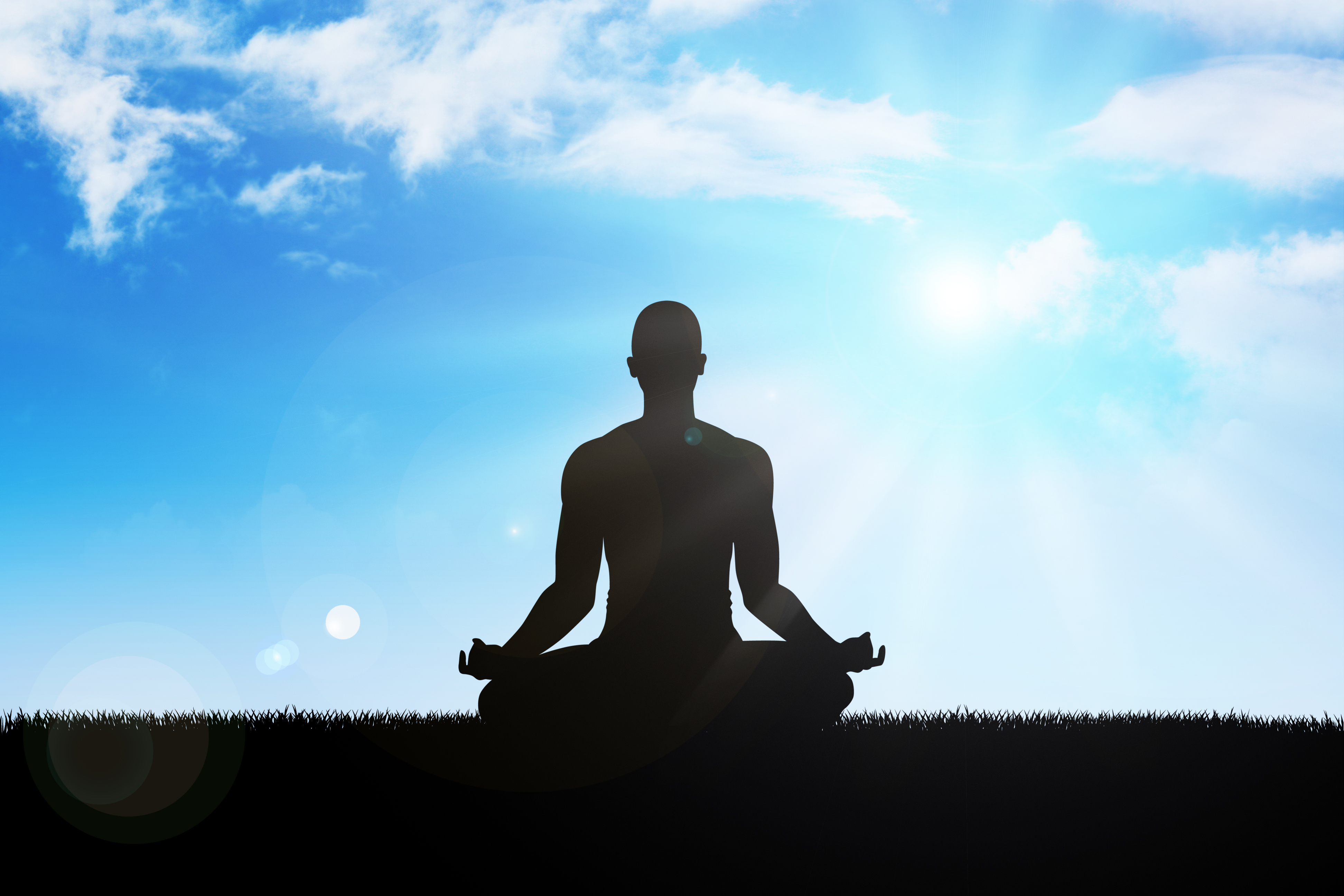 What does the environment at the 10-day Vipassanā course look like?
What does the environment at the 10-day Vipassanā course look like?
10-day courses are typically located away in peaceful sylvan locations, away from the hubbub of big cities. I've attended courses in California at three different centers: North Fork, CA (near Yosemite), Kelseyville (90 minutes north of Napa Valley) and Twenty Nine Palms, CA (near Joshua National Park). Among these three, the center in North Fork is owned by Vipassana folks, so courses are held throughout the year. The other two centers are rented during peak season when many people have vacation. I like North Fork the most. It is the oldest facility, in the mountains, very quiet, and runs smoothly.
Residential quarters are provided for all students. Rooms might be shared by two or more persons. Some centers allow participants to get their own tents.
All centers have a large hall for group meditation. All students must be present in the hall for three sessions every day. These sessions are held at specific hours (8am to 9am, 2:30pm to 3:30pm, 6:00pm to 9:00pm). During other hours for meditation, students may spend time in the meditation hall or in their residential quarters.
Some centers have individual cells for meditators. Even when cells are available, they are optional; students may choose to meditate in the main hall or in their residential quarters or the cell assigned to them.
Many couples attend the 10-day camp. However, men and women stay separately throughout the course, in their own quarters.
Vegetarian food is served thrice a day. Breakfast is from 6:30 to 8:00. Lunch is from 11:00 to 12:00. Fruits and tea are served from 5:00 to 6:00. Students who have completed one 10-day course in the past are deemed 'old students'. They may not eat fruit or milk-based drinks after noon.
Food is sattvic (in layman's language, 'plain and simple'), prepared by volunteers. So people accustomed to spicy, oily, salty and sugary diets would find this change refreshing.
The human body adjusts remarkably quickly to two meals a day. Since camp participants sit and meditate almost all the time instead of doing rigorous physical activities, less daily caloric intake suffices.
Almost all of the food at the North Fork center is actually vegan. For morning breakfast, non-dairy milk is available. For my last three courses, I always informed the course manager that it would be nice if they would label food as 'dairy-free' or 'with dairy'. Since veganism is quite well known in California, finding vegan food has not been a challenge. For those wish special diets or special needs, special meals get prepared.
I really liked the food at North Fork in 2016. It was super delicious. Plain, simple, healthy and tasty.
Courses are free for students, run by volunteers with charitable contributions from former students. Only those who have finished a 10-day course may donate. Students are asked to donate only after finishing the course and only if they feel that learning this technique would benefit others. Donation to pay for one's lodging and food, the way one pays at restaurants and hotels, is discouraged.
S N Goenka himself teaches only at a few locations. The worldwide centers have "assistant teachers" chosen by S N Goenka. These teachers answer technique-related questions during Q&A hours every day. The actual instructions for meditation and the daily instructions are given through video tapes recorded in S N Goenka's own voice.
Participants must observe five precepts: no killing, no lying, no stealing, no sexual misconduct and no intoxication. The course environment is carefully set up so that these five precepts are observed.
Silence is maintained for the first nine days. We may talk to course management if something is amiss with the residential facilities. Additionally, we may pose questions to assistant teachers at designated times. There is a 1-hour time slot for 'interviews' daily. During these interviews, students may pose technique-related questions to assistant teachers.
An important reason for maintaining silence is to follow the precept of 'no lying'. Vegetarian food is served in keeping with the 'no killing' precept. Segregation of men and women is done with the intention of avoiding sexual misconduct. No alcohol or intoxicants are served at the course.
| 4:00 am | Morning wake-up bell |
| 4:30-6:30 am | Meditate in the hall or in your room |
| 6:30-8:00 am | Breakfast break |
| 8:00-9:00 am | Group meditation in the hall |
| 9:00-11:00 am | Meditate in the hall or in your room |
| 11:00-12:00 noon | Lunch break |
| 12noon-1:00 pm | Rest and interviews with the teacher |
| 1:00-2:30 pm | Meditate in the hall or in your room |
| 2:30-3:30 pm | Group meditation in the hall |
| 3:30-5:00 pm | Meditate in the hall or in your room |
| 5:00-6:00 pm | Tea break |
| 6:00-7:00 pm | Group meditation in the hall |
| 7:00-8:15 pm | Teacher's Discourse in the hall |
| 8:15-9:00 pm | Group meditation in the hall |
| 9:00-9:30 pm | Question time in the hall |
| 9:30 pm | Retire to your own room--Lights out |
The daily schedule is daunting! We have to wake up at 4:00am and sleep at 9:30am. But only four hours of "Group meditation in the hall" and one hour of "Teacher's discourse in the hall" are mandatory. If you do not show up during these hours, volunteers shall request you to go to the meditation hall. For further details, check out Code of Discipline and Questions and Answers for the 10-day course.
The format of the 10-day course is fixed; there is no flexibility. My concern is that different students would make progress at different rates. So perhaps vipassanā meditation (the second meditation) should be introduced later for some students, when their minds have become sufficiently concentrated and sharp. I wonder if such an approach is adopted at monasteries where students stay for months to learn meditation techniques.
S N Goenka gives an hour-long discourse every evening from 7:00 to 8:15. See YouTube playlist of all discourses. These discourses are technique-oriented. They provide ancillary guidelines, answers to frequently asked questions and pitfalls to avoid during meditation. These also describe the philosophy underlying the techniques being taught and how meditation affects you. The discourses are actually fun because S N Goenka makes people laugh many times through stories and anecdotes.
I was able to follow all discourses except the one that covered difficult aspects of Buddhist philosophy: The Five Aggregates and Dependent Origination (the Wikipedia article is too dense; the discourse by S N Goenka is much simpler). This particular discourse used too many concepts, and it was not clear as to how one would verify all these concepts through personal experience — over time, by practicing meditation, perhaps?
At the 10-day camp, it is emphasized that one should not believe the theoretical aspects of Buddhist philosophy (or breath meditation or vipassanā meditation) because a master says so, or by convincing oneself of the theory through mental analysis or debates. Belief should stem from personal experience (also called 'direct experience'). Such emphasis on personal experience is common to many spiritual traditions from the East.
An analogy to illustrate the point: you may believe that regular exercise improves mood because a Mayo Clinic article says so (belief in a master). Or you could analyze a book that details relationships between exercise, serotonin and mood, and discuss your knowledge with friends (mental analysis and debates). However, it is best to actually exercise yourself and verify the claim that exercise improves mood (personal experience).
S N Goenka (1924-2013) was a leading industrialist from India. He spent his early years in Burma, becoming a wealthy businessman in his twenties. His business had international offices in countries like Japan and Switzerland. At the same time, he also got serious migraines that could be cured only by weekly morphine injections. In search for a cure, S N Goenka went to Sayagyi U Ba Khin's 10-day course and never looked back. In 1969, after fourteen years of regular practice, he visited India to conduct a 10-day course for his parents and some acquaintances. Course participants experienced great benefits. So knowledge of the course spread by word of mouth. As a result, S N Goenka started conducting more and more courses. After forty years, in 2009, there are over 80 international centers where "assistant teachers" conduct courses.
Sayagyi U Ba Khin (1899-1971; Wikipedia page) was S N Goenka's teacher. He grew to become a top-ranking civil servant in the Burmese government. He learnt Vipassanā from Saya Thetgyi. A famous Buddhist monk Webu Sayadaw asked Sayagyi U Ba Khin to start teaching Vipassanā when the two met by chance. One of Sayagyi U Ba Khin's prominent students is Mother Sayamagyi (1925-2017), who continued to run his meditation center in Burma. By 2018, the center had grown to at least thirteen international centers. The USA branch of International Meditation Center is close to Westminister, Maryland, USA. The formats of the 10-day course offered at these centers is identical to the format at S N Goenka's meditation centers.
Saya Thetgyi (1873-1943) was a wealthy farmer in Burma who learnt meditation from Ledi Sayadaw. When he was thirty, a cholera epidemic swept away his wife, son, daughter, nephew and brother-in-law. This massive tragedy prompted Saya Thetgyi to search for answers. With a companion, he traveled all over Burma and eventually found refuge in Ledi Sayadaw.
Ledi Sayadaw (1846-1923) was a famous Buddhist monk from Burma who studied under multiple teachers. He not only had a thorough knowledge in Buddhist scriptures but also was accomplished in their practice. He also wrote several expository books and commentaries.

